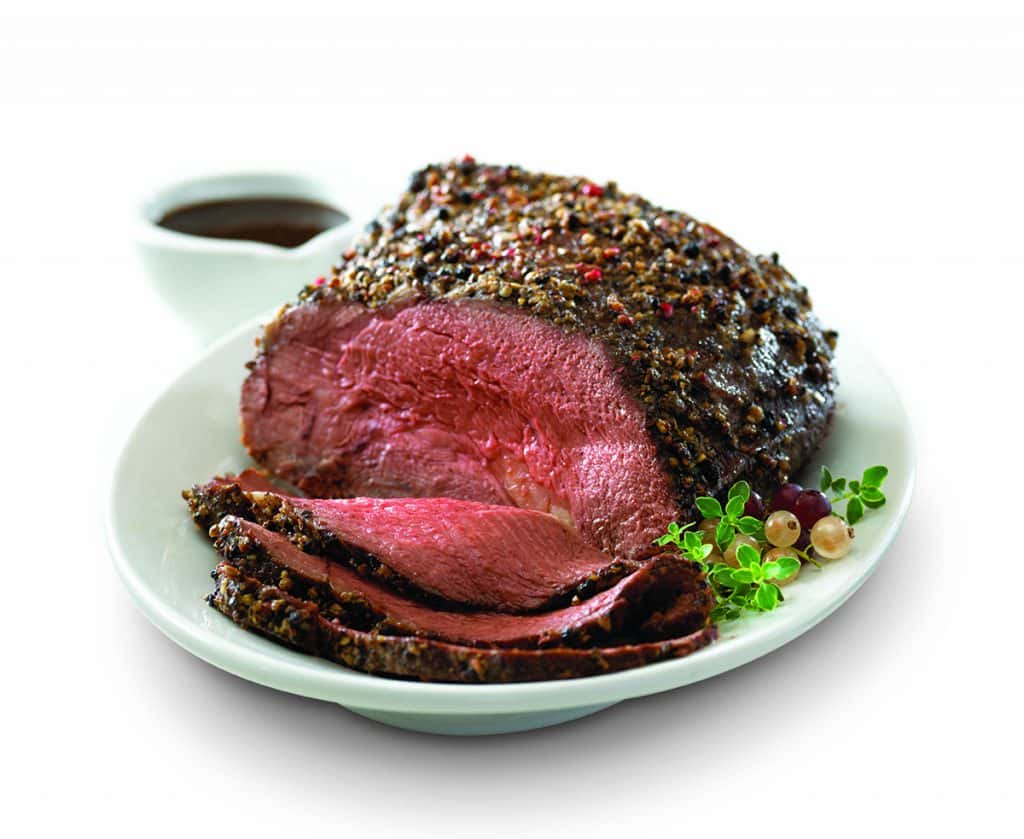Even though a beef rump roast isn’t the most well-known or prestigious cut of meat, it tastes great and is a great deal. If you prepare and cook rump roast the right way, it can be a delicious main dish for family meals or special events. However, cutting it correctly is key to bringing out its full potential.
This complete guide will show you how to cut a beef rump roast the right way, from seasoning and searing to slicing for the most tender results. Let’s get started!.
What is a Beef Rump Roast?
First let’s clarify what part of the cow a rump roast comes from. A rump roast is cut from the round primal which is the back leg region. It comes from the top portion closer to the loin area.
Compared to other roasts, rump roast contains less marbling, so it can be a leaner choice. However, it makes up for this with rich, beefy flavor when cooked right With the proper prep and cooking technique, rump roast can turn out incredibly juicy and tender.
Prepping a Rump Roast for the Oven
Before cooking your rump roast there are a few key steps for preparation
-
Let It Come to Room Temp – Take the roast out of the fridge and allow it to come closer to room temp before cooking. This helps it cook more evenly. Give it at least 30-60 minutes.
-
Season Generously – Rub the roast all over with olive oil then season liberally with salt, pepper, garlic powder, fresh herbs, etc. Getting seasoning into every crevice is key.
-
Sear the Outside – Searing the roast creates caramelization that enhances flavor. Heat oil in a pan to smoking then sear all sides until well-browned.
Once seared, the roast is ready for a slow cook in the oven until perfectly medium rare.
How to Cook Rump Roast for Max Tenderness
Cooking method has a huge impact on the tenderness of the final roast. Here are two options:
Oven Roast (125-135°F internal temp)
-
Place seared roast in a 275°F oven for approx. 15-20 minutes per pound.
-
Use a meat thermometer to gauge doneness, removing at 125°F for med-rare.
-
Rest 15+ minutes before slicing against the grain.
Slow Cook or Braise (190-205°F)
-
Brown roast then cook covered on low heat for 3-4 hours until fall-apart tender.
-
Cook in broth, wine or sauce to braise the meat as it cooks.
-
Shred or slice extremely tender meat after cooking.
Both methods yield delicious results, just different textures. Oven roasting keeps more structure while slow cooking makes it fall-off-the-bone tender.
How to Carve a Rump Roast for Perfect Slices
Once your rump roast is cooked, proper carving is essential for presentation and eating enjoyment. Follow these steps:
-
Let It Rest – Allow the roast to rest 15-20 minutes before slicing to redistribute juices.
-
Identify Grain Direction – Look closely at the surface to identify which way the meat fibers run along the roast. This is the “grain” direction.
-
Slice Against the Grain – Using a sharp knife, carefully slice the roast crosswise against the grain, perpendicular to the muscle fibers.
-
Cut Thin, Even Slices – Carve across the roast in smooth, steady motions. Aim for approximately 1⁄4 to 1⁄2 inch thickness.
-
Serve Immediately – Arrange slices on a platter and serve right away while meat is still warm and juicy.
Slicing against the grain and cutting into thinner slices makes all the difference in tenderness when eating. Be sure to go slow and steady as you carve.
Serving Suggestions for Rump Roast
Once sliced, serve your savory rump roast with these delicious side dishes:
- Mashed or baked potatoes to soak up the meat juices
- A green veggie like broccoli, green beans, or Brussels sprouts
- Fresh bread or rolls to round out the meal
- A salad like a classic Caesar or simple mixed greens
- Au jus, gravy, or chimichurri sauce for an extra flavor boost
Get creative with your pairings! Rump roast also makes fabulous sandwiches the next day using leftovers.
Common Questions about Rump Roast
Here are answers to some frequently asked questions:
What is the best way to cook rump roast?
Both oven roasting and slow cooking/braising can yield delicious roasts. Oven roasting typically has more structure but slow cooking makes it fall-apart tender.
Should you tie a rump roast?
Tying the roast with butcher’s twine can help maintain its shape, especially if oven roasting to medium doneness. But it’s not strictly necessary.

